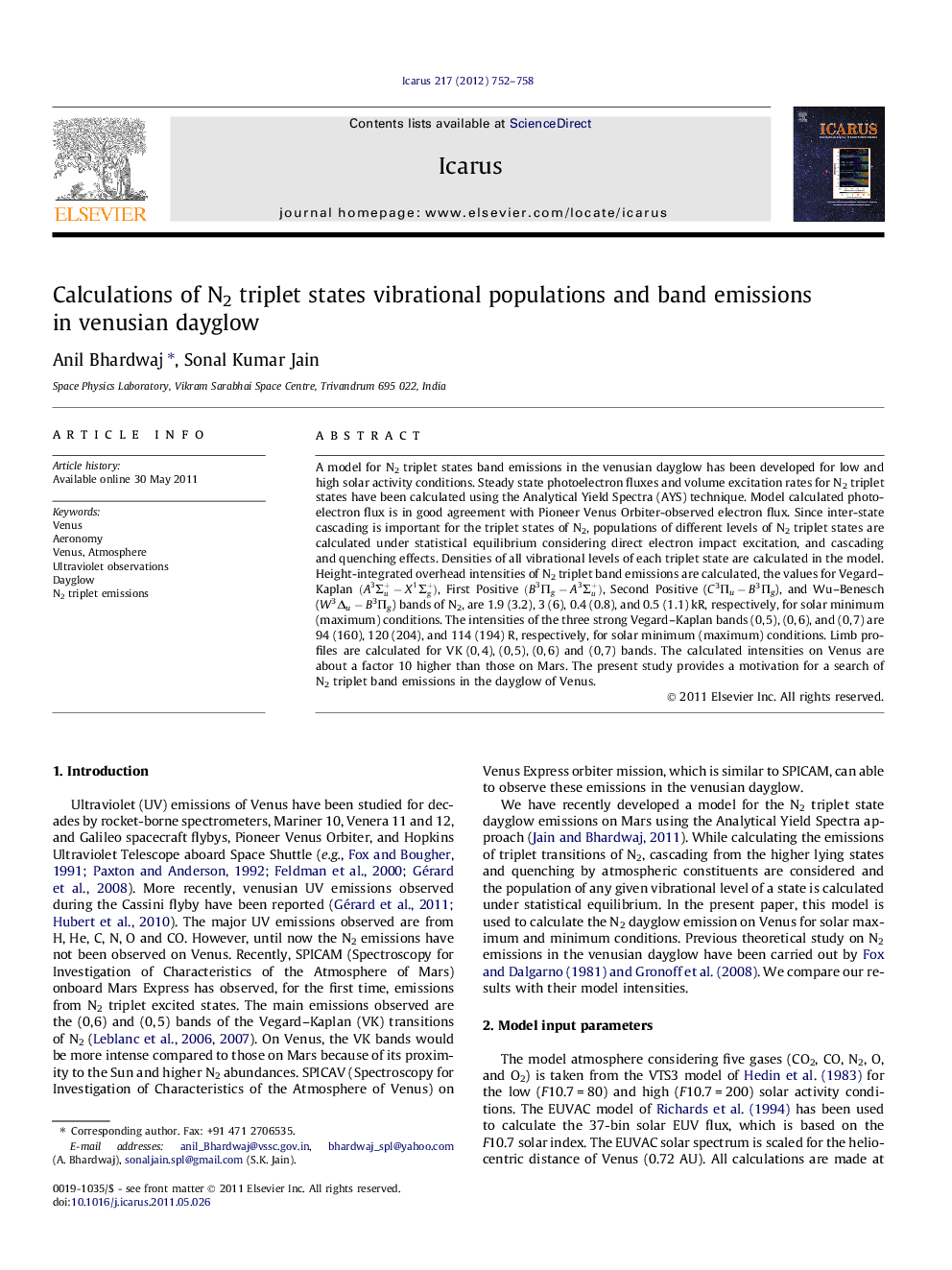| Article ID | Journal | Published Year | Pages | File Type |
|---|---|---|---|---|
| 1773697 | Icarus | 2012 | 7 Pages |
A model for N2 triplet states band emissions in the venusian dayglow has been developed for low and high solar activity conditions. Steady state photoelectron fluxes and volume excitation rates for N2 triplet states have been calculated using the Analytical Yield Spectra (AYS) technique. Model calculated photoelectron flux is in good agreement with Pioneer Venus Orbiter-observed electron flux. Since inter-state cascading is important for the triplet states of N2, populations of different levels of N2 triplet states are calculated under statistical equilibrium considering direct electron impact excitation, and cascading and quenching effects. Densities of all vibrational levels of each triplet state are calculated in the model. Height-integrated overhead intensities of N2 triplet band emissions are calculated, the values for Vegard–Kaplan (A3Σu+-X1Σg+), First Positive (B3Πg-A3Σu+), Second Positive (C3Πu − B3Πg), and Wu–Benesch (W3Δu − B3Πg) bands of N2, are 1.9 (3.2), 3 (6), 0.4 (0.8), and 0.5 (1.1) kR, respectively, for solar minimum (maximum) conditions. The intensities of the three strong Vegard–Kaplan bands (0, 5), (0, 6), and (0, 7) are 94 (160), 120 (204), and 114 (194) R, respectively, for solar minimum (maximum) conditions. Limb profiles are calculated for VK (0, 4), (0, 5), (0, 6) and (0, 7) bands. The calculated intensities on Venus are about a factor 10 higher than those on Mars. The present study provides a motivation for a search of N2 triplet band emissions in the dayglow of Venus.
► Steady state photoelectron fluxes calculated using Analytical Yield Spectra technique are compared with the observations. ► Vibrational populations of N2N2 triplet states are calculated using statistically equilibrium condition. ► Overhead intensities of N2N2 Vegard–Kaplan, 1P, 2P, Wu–Benesch, Harman–Kaplan, and Reverse First Positive bands are presented. ► Limb intensities of N2N2 VK (0, 6) band on Venus is a factor of 10 higher than that on Mars. ► The effect of solar cycle on the N2N2 triplet band emission intensities is studied.
